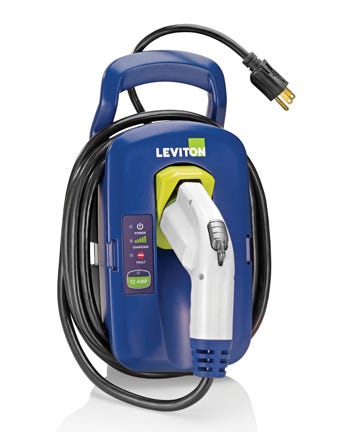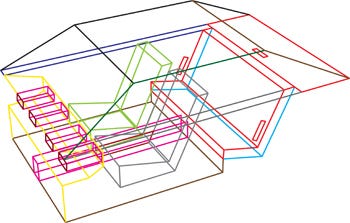Plastics are playing an even greater role as the second generation of hybrid and electric vehicles take the road, with design engineers applying their ability to lightweight, add functionality, and consolidate parts to help increase range for the new breed of automobiles. "OEMs didn't really maximize on the use of plastics or take the opportunity to optimize the design for plastics with the first group of vehicles because they were looking to reduce risk in areas that have control of," V.
July 12, 2011
Plastics are playing an even greater role as the second generation of hybrid and electric vehicles take the road, with design engineers applying their ability to lightweight, add functionality, and consolidate parts to help increase range for the new breed of automobiles. "OEMs didn't really maximize on the use of plastics or take the opportunity to optimize the design for plastics with the first group of vehicles because they were looking to reduce risk in areas that have control of," V. Umamaheswaran (UV), the global automotive marketing director for SABIC Innovative Plastics told PlasticsToday. "They didn't want to put too much new technology in at the same time, so a lot of the OEs went with metal enclosures for the first generation because it's something that they knew how to work with."
Leviton Car Charger using Sabic Innovative Plastics materials |
Sabic Innovative Plastics has applications within hybrid and electric vehicles in North America, Europe and Asia (although most fall under strict NDAs). It's also working to supply materials for the infrastructure around non-gas vehicles, like the Leviton car charger. |
UV said the automotive industry has played out this scenario before, settling on the familiar before seizing on the opportunities presented by the new. "It's kind of like the old fuel tanks," UV said. "You just had a cheap, metal, rectangular box of a fuel tank hanging from the bottom, and now when you look at what plastics have done for fuel tanks, they fit the packaging you have available by squeezing it into different geometries and taking advantage of the different shapes you can do with plastics. There is a similar evolution happening with plastics in battery enclosures, where it doesn't have to be a big rectangular box any more. It can be segmented, and you can package it more efficiently in the vehicle, so we're starting to see more and more interest in beingable to use high-performance engineering plastics in the packaging of batteries."
In April, SABIC Innovative Plastics introduced a portfolio of Noryl modified polyphenylene oxide (PPO) and Valox polybutylene terephthalate (PBT) resins designed to create alternative power train solutions that displace weight and increase performance for hybrid, plug-in hybrid (PHEV), and battery electric vehicles (BEV). UV told PlasticsToday that both materials are seeing increased interest in applications for alternative-energy vehicles, with the ability to meet certain performance characteristics required:
Resistance to cooling fluids: For maximum range, the battery must be kept at the optimal temperature, and to do this the battery system runs heat-exchange fluids through a heat exchanger, heating or cooling as needed, with the plastic enclosure in continuous contact with the liquid.
Dimensional stability: Leaks in a car are bad, in the battery-cooling system they limit range, so automakers have to look at three-dimensional tolerances and the coefficient of thermal expansion, to make sure there are no gaps.
Flame retardance: As with most plastics within a car, resistance to fire is essential.
"Noryl resin is inherently flame retardant," UV said, "so it's been the material of choice for all of the properties that I talked about and in addition to that, being a very low specific gravity, lightweight material, it's becoming a material of choice."
UV added that Noryl resin is seeing more adoption on battery enclosures for the bus bars, which contain terminals and connect all the battery cells. For the enclosure itself, Noryl sees more use.
In addition to parts integration, UV said plastics have also presented opportunities for building in functionality, including EMI/RFI shielding. UV notes that within these vehicles there are a lot of electronics and electrical components that require shielding, creating opportunities for the company's LNP line of specialty compounds, including Faradex compound, as well as electrically dissipative materials.
Less weight = greater range; plastics can help
On average, the battery alone adds about 100 lb or 50-60 kg of additional weight to a vehicle. If you take into account all the other electrical/electronics, motors, and accompanying components, the total figure "adds up pretty quickly," according to UV.
Sabic Lexan glazing |
Computer analyses of the thermal insulation benefits of Lexan PC automotive glazing have quantified its potential to reduce the load on HVAC systems based on the lower thermal conductivity of PC vs. glass. Sabic says the findings underscore the value of using Lexan PC glazing to help improve efficiency for conventional, hybrid, and electric vehicles. |
"You have to get the weight out in order to get the range out of the vehicle," UV said. "You have to be able to optimize pretty much every gram on an electric vehicle." This extends into areas like aerodynamics and work to reduce drag, but it largely applies to smarter part and system design.
"Through parts consolidation, through metal replacement, through making hybrid-metal plastic structures, those are all areas where we're able to provide weight savings," UV said. As a company, SABIC Innovative Plastics has also tackled weight reduction in cars through the previous introduction of plastic body panels, fenders, and glazing.
Getting OEM buy in
Regardless of the drive technology, there are many more opportunities to reduce vehicle weight by applying more plastics in automobiles. Whether or not OEMs who initially structured their plants around steel, rubber, and glass-based cars can shift material gears, however, remains to be seen. "I don't think there is a magic wand that you can wave and solve all the weight issues," UV said, "but I certainly think from a lightweighting standpoint, we have a tremendous amount of solutions, but they have to be holistically adopted, and I say holistically because it's not just the cost aspect of it: it's how you build a vehicle, the bill of materials, the sequence, the legacy investment that they already have in the ground. All of that plays a role into why the OEs haven't been that enthusiastic about maximizing the use of plastics and lightweighting and taking advantage of whatever plastics has to offer."
About the Author(s)
You May Also Like




